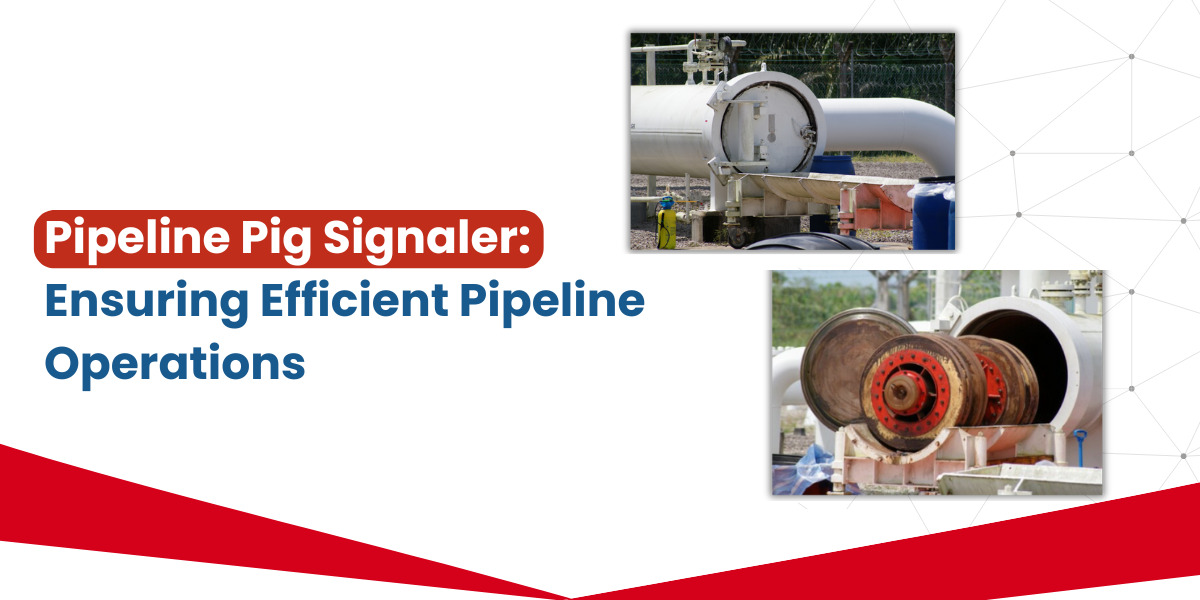
Pipeline Pig Signaler: Ensuring Efficient Pipeline Operations
Pipelines are the lifelines of numerous industries, tirelessly transporting valuable resources like oil, gas, water, and chemicals across vast distances. The efficiency and integrity of these pipelines are paramount, directly impacting operational costs, environmental safety, and overall business success. One unsung hero in maintaining this efficiency is the
pipeline pig signaler.
While the term “pig” might conjure images of farm animals, in the world of pipelines, a “pig” refers to a specialized device sent through the pipeline for various tasks such as cleaning, inspection, or batch separation. But how do you know where the pig is, or if it has successfully completed its mission? This is precisely where pipeline pig signalers come into play, acting as crucial indicators that confirm the passage of a pig, thereby ensuring efficient and safe pipeline operations.
What is a Pipeline Pig Signaler?
At its core, a pipeline pig signaler is a device designed to detect and indicate the passage of a pipeline pig. These robust instruments are mounted externally on the pipeline and provide a visual, mechanical, or electronic signal when a pig passes by. This seemingly simple function is vital for a multitude of reasons, from confirming cleaning operations to verifying the completion of critical inspection runs.
The Critical Role of Pig Signalers in Pipeline Operations
The importance of pig signalers cannot be overstated. They are integral to:
- Verifying Pig Passage: The most fundamental role is to confirm that a pig has successfully traveled from one point to another. This is crucial for all pigging operations, ensuring that a cleaning pig has cleared debris, an inspection pig has completed its survey, or a batching pig has separated different products.
- Optimizing Operations: By providing real-time confirmation of pig location, operators can make informed decisions, reducing downtime and optimizing the overall pigging schedule. This leads to more efficient use of resources and reduced operational costs.
- Enhancing Safety: In many pigging operations, knowing the exact location of a pig is a safety imperative. For example, during cleaning operations involving hazardous materials, knowing when the pig has passed a certain point ensures personnel safety during subsequent tasks. For intrusive pig signal indicators, their presence on the pipeline directly signals a pig’s passage.
- Troubleshooting and Anomaly Detection: If a pig fails to arrive at a designated signaler within an expected timeframe, it immediately flags a potential issue, such as a stuck pig or an obstruction in the pipeline. This allows for prompt investigation and intervention, preventing more significant problems.
- Data Logging and Record Keeping: Many modern pig signalers can integrate with control systems, providing data on pig transit times. This data is invaluable for performance analysis, future planning, and compliance reporting.
- Preventive Maintenance Scheduling: By understanding pigging frequencies and success rates through signaler data, operators can better schedule preventive maintenance, anticipating potential issues before they escalate.
Types of Pipeline Pig Signalers
Pipeline pig signalers come in various designs, each suited for different applications and pipeline conditions. The primary distinction lies in their detection mechanism and how they indicate pig passage.
1. Intrusive Pig Signalers
These are the most traditional and widely used type of pig signaler. As the name suggests, an intrusive element extends into the pipeline to make direct contact with the passing pig.
- Mechanical Intrusive Pig Signalers: These signalers typically feature a trigger mechanism, such as a paddle, flag, or button, which is pushed by the pig as it passes. This movement then activates a visual indicator (like a pop-up flag), an electrical contact (for remote signaling), or both.
- Advantages: Simple, reliable, and cost-effective. They offer a direct and unambiguous indication of pig passage.
- Disadvantages: Requires an opening in the pipeline, which can be a point of potential leakage if not properly maintained. The intrusive element can also be subject to wear and tear.
2. Non-Intrusive Pig Signalers
Non-intrusive pig signalers are designed to detect the pig’s passage without directly contacting it or requiring any penetration into the pipeline. This makes them ideal for critical pipelines where maintaining integrity is paramount.
- Magnetic Pig Signalers: These signalers detect the magnetic field emitted by a magnet installed on the pig. They are particularly effective for pipelines transporting non-ferrous materials or where the pig itself has a strong magnetic signature.
- Advantages: No pipeline penetration, reducing the risk of leaks and simplifying installation. Ideal for high-pressure or corrosive environments. They are a feature-specific solution for pig signaling.
- Disadvantages: Requires the pig to be equipped with a magnet. Can be affected by external magnetic interference.
- Ultrasonic Pig Signalers: These devices use ultrasonic waves to detect the presence of a pig. Transducers emit and receive ultrasonic signals, and a change in the reflected signal indicates the pig’s passage.
- Advantages: Non-intrusive and can work with various pig types. Effective for pipelines with varying wall thicknesses.
- Disadvantages: Can be affected by pipeline wall conditions, internal coatings, or gas bubbles. Requires careful calibration.
- Acoustic Pig Signalers: These signalers detect the sound or vibration generated by the pig as it travels through the pipeline.
- Advantages: Can detect pigs in challenging conditions where other methods might fail.
- Disadvantages: Can be sensitive to external noise or vibrations, requiring careful placement and filtering.
Key Considerations When Choosing a Pig Signaler
Selecting the right pipeline pig signaler involves evaluating several factors to ensure optimal performance and reliability:
- Pipeline Diameter and Material: The size and material of the pipeline will influence the type of signaler that can be effectively deployed.
- Fluid Type and Characteristics: The type of fluid being transported (e.g., liquid, gas, multiphase, corrosive) will dictate the material compatibility and the detection method.
- Operating Pressure and Temperature: Signalers must be rated for the maximum operating pressure and temperature of the pipeline to ensure safety and longevity.
- Pig Type and Configuration: The design of the pig (e.g., cup pig, foam pig, intelligent pig) will affect how it interacts with intrusive signalers or its magnetic/acoustic signature for non-intrusive types.
- Environmental Conditions: External factors such as extreme temperatures, humidity, dust, or corrosive atmospheres need to be considered when selecting the signaler’s construction and sealing.
- Hazardous Area Classification: For pipelines in explosive atmospheres, the signaler must be certified for the appropriate hazardous area classification (e.g., ATEX, IECEx). Explosion-proof switches are a niche compliance product.
- Required Indication Type: Whether a local visual indication is sufficient, or if remote electronic signaling to a control room is necessary.
- Installation and Maintenance: Ease of installation and ongoing maintenance requirements should be considered to minimize operational disruptions.
- Cost: While initial cost is a factor, long-term reliability and the cost of potential downtime due to signaler failure should also be weighed.
Installation and Maintenance Best Practices
Proper installation and regular maintenance are crucial for the reliable operation of pipeline pig signalers.
Installation:
- Strategic Placement: Signalers should be installed at critical points along the pipeline, such as launch and receive traps, major bends, and strategic intervals to monitor pig progress.
- Proper Orientation: Ensure the signaler is correctly oriented with respect to the pipeline flow and pig travel direction.
- Secure Mounting: The signaler must be securely mounted to the pipeline to withstand vibrations and pig impact (for intrusive types).
- Clearance (for intrusive): For intrusive signalers, ensure the probe extends adequately into the pipeline to detect the pig, but not so much as to impede flow or damage the pig.
- Wiring and Connections: All electrical connections for electronic signalers must be properly sealed and routed according to industry standards and hazardous area requirements.
Maintenance:
- Regular Inspections: Periodically inspect signalers for physical damage, corrosion, or signs of wear.
- Functionality Checks: Routinely test the signaler’s functionality by simulating a pig passage or manually activating the mechanism.
- Cleaning: Keep the external parts of the signaler clean, especially visual indicators, to ensure clear visibility.
- Lubrication (for mechanical): For mechanical intrusive signalers, ensure moving parts are adequately lubricated to prevent sticking.
- Calibration (for electronic/ultrasonic): Electronic and ultrasonic signalers may require periodic calibration to maintain accuracy.
- Troubleshooting: If a signaler fails to activate, troubleshoot by checking power supply, wiring, and the mechanical mechanism.
The Future of Pig Signaling: Integration and Intelligence
As industries move towards more integrated and intelligent operations, pipeline pig signalers are also evolving.
- Wireless Connectivity: Wireless vibration analyzers and online vibration monitoring devices are gaining traction, providing real-time data without the need for extensive wiring. Similarly, wireless pig signalers will offer greater flexibility in installation and data transmission.
- Integration with SCADA and IoT Systems: Seamless integration with Supervisory Control and Data Acquisition (SCADA) systems and Industrial Internet of Things (IIoT) platforms allows for centralized monitoring, data analysis, and automated alerts.
- Predictive Analytics: Data collected from pig signalers, combined with other pipeline data, can be used for predictive analytics, anticipating potential issues and optimizing pigging schedules even further. Machine condition monitoring tools and predictive maintenance instruments are already a reality.
- Smart Signalers: Future pig signalers may incorporate more advanced processing capabilities, allowing for local data analysis and more intelligent decision-making at the device level.
Why Partner with VPEL for Your Pig Signaling Needs?
At Virtuoso Projects & Engineers (VPEL), we understand the critical role that reliable pipeline pig signalers play in ensuring efficient and safe pipeline operations. As a leading supplier of instrumentation and control systems, including field instrumentation devices and industrial measurement instruments, we offer a comprehensive range of pig signalers to meet the diverse needs of various industries.
Whether you require a magnetic pig signaler for a specific application or a complete pig detection system for pipelines, our expertise ensures you get the right solution. We supply robust and reliable pig signaling devices designed for demanding industrial environments, contributing to seamless pigging operations and enhanced pipeline integrity.
We also offer:
- Extensive Product Range: From non-intrusive pig signalers to traditional intrusive pig signal indicators, we have a solution for every requirement.
- Quality and Reliability: We partner with reputable manufacturers to ensure the highest quality and reliability of our products.
- Technical Expertise: Our team of experts can provide guidance on selecting the most appropriate pig signaler for your specific pipeline and operational needs.
- Support and Service: We are committed to providing excellent customer support, from initial consultation to after-sales service.
- Local Presence: As a leading pig signaler supplier in India, we understand the local market and can provide timely solutions and support across regions like Gujarat, Maharashtra, Chennai, Hyderabad, Bangalore, Pune, and Mumbai.
Ensuring the efficient and safe operation of your pipelines is paramount. By leveraging the right pipeline pig signalers, you can gain valuable insights into your pigging operations, prevent costly downtime, and maintain the integrity of your critical infrastructure. Contact VPEL today to discuss your pipeline pig signaler requirements and let us help you optimize your pipeline operations.

